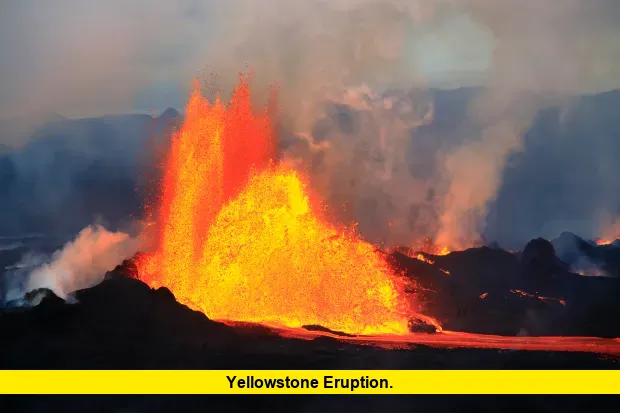Yellowstone eruption forecasts have captivated both scientists and the public, especially following recent seismic and geothermal updates as of July 2025. The Yellowstone Caldera, monitored closely by the United States Geological Survey (USGS), remains a focal point for volcanic research and public safety alike. As of this month, latest observatory data confirms that Yellowstones’s volcanic activity continues well within normal parameters, dispelling concerns about any imminent catastrophic eruption.
Current Activity and Monitoring: Volcano Alert Remains Normal
The USGS Yellowstone Volcano Observatory released its July 2025 monthly update, confirming that the volcano alert level is “NORMAL” and the aviation color code is “GREEN”—both representing the lowest possible threat levels. In June 2025, 60 minor earthquakes were recorded, with the largest at magnitude 2.7. Such seismic events are typical, with Yellowstone region registering 1,000 to 3,000 small quakes every year due to its dynamic tectonic and hydrothermal activity.
Ground deformation—often a leading sign of magma movement—has conformed to seasonal expectations. Since October, roughly 3 centimeters of gradual subsidence, not uplift, have occurred. No new magma intrusions or unusual earthquake swarms have been detected, reinforcing that the caldera is in a calm, stable state.
Key Points Summary
- Alert Level: Volcano alert remains at NORMAL.
- Earthquake Activity: 60 minor quakes in June; largest magnitude 2.7.
- Ground Movement: Gradual, seasonal subsidence (~3 cm), not uplift.
- Volcanic Threat: No evidence of imminent eruption.
- Recent Observations: Another small hydrothermal eruption at Black Diamond Pool in June (minor, not volcanic).
Yellowstone Eruption Signs: What the Science Really Says
Concerns over a potential Yellowstone eruption usually spike on social media when geysers or hydrothermal features behave unusually. However, scientific consensus remains steady: the vast monitoring array maintained by the USGS and its partners shows no sign of a looming volcanic crisis. Routine hydrothermal events, such as minor eruptions at Black Diamond Pool and Steamboat Geyser, are natural features of the park and not signals of a major volcanic event.
Earthquake swarms, which sound alarming, actually tend to be common in Yellowstone. In fact, recent machine learning analysis of earthquake data (from 2008-2022) indicates many more small seismic events occur than previously thought, most being harmless swarms rather than indicators of magma movement. The park’s advanced monitoring networks would detect any meaningful increase in eruption risk well in advance.
To clarify current misconceptions, here’s a comparison table summarizing eruption signs versus current conditions:
| Warning Sign | Current Observation (July 2025) |
|---|---|
| Increased earthquake rate | Below average; no swarms detected |
| Significant ground uplift | Seasonal subsidence observed |
| Hydrothermal explosions | Small, localized, not magma-driven |
| Major geyser behavior | Normal; minor Steamboat Geyser activity |
| Magma intrusion detected | No evidence of new magma movement |
Scientific Findings: Why Yellowstone Remains Dormant
Recent peer-reviewed research confirms that Yellowstone’s caldera harbors a gas-venting cap of partially crystallized magma deep below the surface. This cap allows safe release of gases and pressure, acting as a natural buffer that reduces eruption risk. The caldera’s current state is described as repose—a period of low volcanic activity—supported by ongoing and historic patterns observed throughout decades of research.
Annual probability estimates for a super-eruption are now as low as 0.00014 percent, based on eruption histories and present geological evidence. Researchers highlight that gas emissions and minor seismicity are signs of a “breathing” volcanic system, not imminent danger.
Yellowstone Eruption Myths and Facts
Social media frequently fuels rumors of an upcoming Yellowstone eruption. Experts from the USGS debunk these theories, stressing that magnetic, seismic, and hydrothermal monitoring would provide weeks to months of warning before any significant activity. Small geothermal eruptions and geyser activity are part of Yellowstone’s natural behavior, not precursors to volcanic disaster.
Final Thoughts
In summary, the status of the Yellowstone eruption as of July 2025 is reassuringly calm. Scientists remain vigilant with round-the-clock surveillance, but the data speaks for itself: Yellowstone continues to inspire awe rather than fear. Have thoughts about these volcanic updates or experiences in the park? Share your perspective in the comments and join the conversation.
